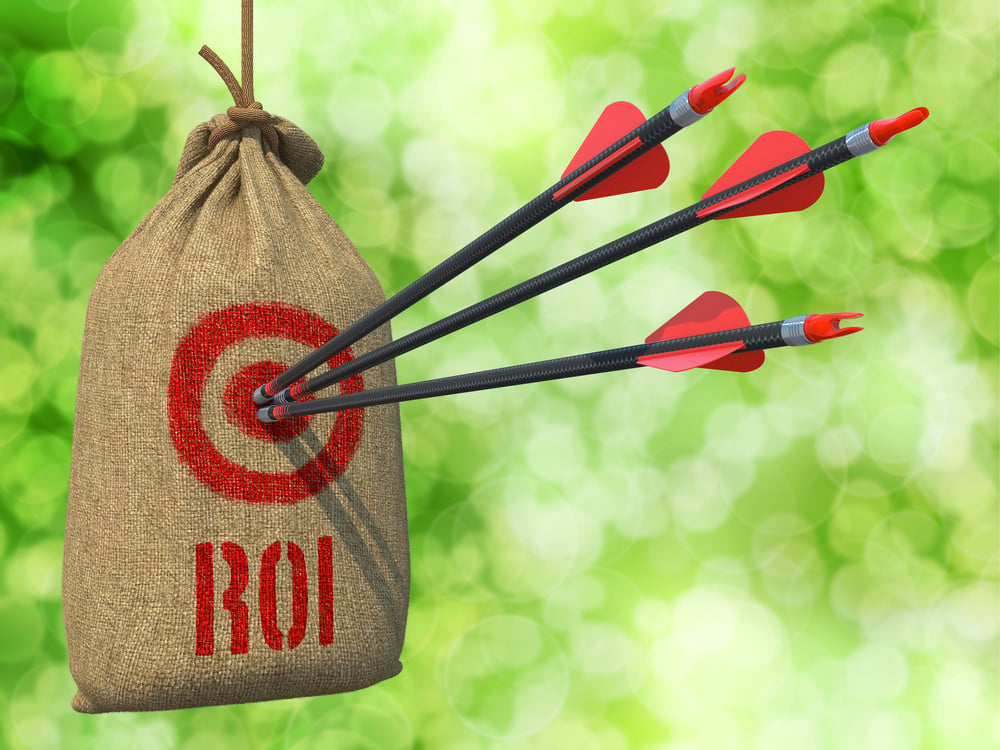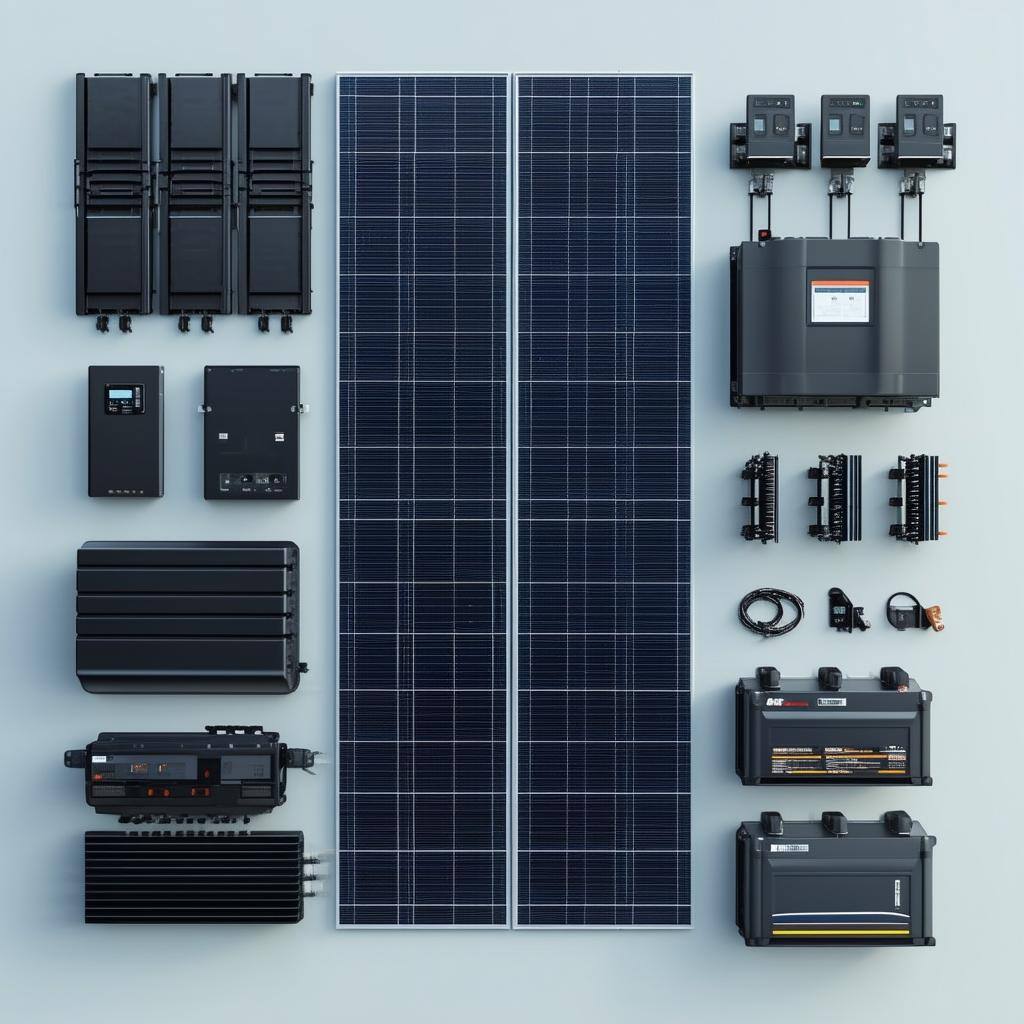6 min read
Estimating Solar Savings: Understanding ROI and Payback Periods
Switching to solar energy is an exciting decision, but it’s also a big investment, so knowing the financial benefits upfront is essential....
6 min read
Peter Swenson : Oct 28, 2024 5:17:55 PM

Choosing the right solar products is one of the most important steps in setting up a solar power system that’s both efficient and durable. With so many options available, it can feel overwhelming to decide on the best solar panels, inverters, and batteries for your needs. But don’t worry—by understanding the basics of each component and what sets certain products apart, you’ll be well-equipped to make a choice that maximizes your investment.
In this guide, we’ll break down everything you need to know to choose the best solar panels, inverters, and batteries for your system. We’ll look at what to consider for efficiency, durability, and overall performance, and wrap it up with a checklist that will simplify your product selection process.
The quality of the components you choose has a direct impact on how much energy your system generates, how much money you save, and how long the system lasts. Here’s why it’s essential to pick products carefully:
Maximize Energy Production: High-quality, efficient products help your system generate more energy, saving you money on electricity and providing better value in the long run.
Increase System Longevity: Solar panels, inverters, and batteries are long-term investments. Choosing durable, reliable products ensures that your system will perform well over many years.
Enhance ROI: Efficient and high-quality components maximize your return on investment, helping you recoup your costs faster and benefit from free energy for years to come.
Selecting the right solar products is about finding the best balance of efficiency, durability, and cost. Now, let’s dive into each component and see what makes a product stand out.
Solar panels are the heart of any solar system. They capture sunlight and convert it into electricity, so choosing the right ones is essential. Here’s what you need to consider when comparing solar panels.
Efficiency refers to how well a panel converts sunlight into usable electricity. Higher efficiency panels generate more power per square foot, which can be beneficial if you have limited roof space. Here are the main types of solar panels:
Monocrystalline Panels: These panels are the most efficient, often reaching 18-22% efficiency. They’re made from a single crystal structure, which allows for better electron flow and higher performance. Monocrystalline panels are ideal if you want maximum output from limited space, but they’re also the most expensive option.
Polycrystalline Panels: Polycrystalline panels are slightly less efficient, typically 15-18%, but they come at a lower cost. They’re a good choice if you have plenty of roof space and want a budget-friendly option without sacrificing too much efficiency.
Thin-Film Panels: These are the least efficient, generally 10-12%, but they’re lightweight and flexible. Thin-film panels are mainly used in commercial installations or areas where roof space isn’t an issue. They’re not the best choice for homeowners seeking high efficiency, but they can be useful for unique applications.
Solar panels are designed to withstand harsh weather, but the quality of the materials and manufacturing process can affect durability. When assessing panel durability, consider:
Temperature Coefficient: This measures how much a panel’s performance drops as temperatures rise. Panels with a lower temperature coefficient perform better in hot climates, where heat can reduce efficiency.
Weather Resistance: Look for panels with a high rating for withstanding snow loads, wind, and hail. If you live in an area prone to extreme weather, choosing panels with robust warranties and proven durability is essential.
Frame Material: High-quality panels usually come with aluminum frames, which are both lightweight and corrosion-resistant. Frames play a big role in durability, so opt for materials that resist rust and degradation over time.
Solar panels degrade over time, meaning their efficiency slowly decreases. High-quality panels have lower degradation rates, which means they maintain their efficiency longer. Most panels degrade by 0.5-1% per year, but some top brands guarantee less than 0.5% degradation annually.
Key Tip: Look for a performance warranty. This ensures that the panel will still produce a certain percentage of its original power output after a set period (usually 25 years). Most reputable brands guarantee around 80-90% efficiency after 25 years.
While solar panels capture energy, inverters play an equally critical role by converting the direct current (DC) electricity generated by the panels into alternating current (AC) electricity, which powers your home. There are three main types of inverters, each with its pros and cons.
String inverters are the most common and often the most cost-effective option. In this setup, multiple panels are connected in a series (or “string”) to a single inverter.
String inverters are best suited for installations where shading isn’t a concern and the panels have similar sun exposure throughout the day.
Microinverters are small inverters attached to each panel, converting DC to AC at the panel level.
Microinverters are ideal for roofs with shading issues or panels that face different directions. They’re also a good choice if you want detailed monitoring capabilities.
Power optimizers, used with string inverters, work by optimizing each panel’s output individually, similar to microinverters. However, they still require a central string inverter to convert DC to AC.
Power optimizers are a good middle-ground option for systems where shading might be a concern but budget is also a consideration.
Key Tip: If you want a reliable, cost-effective solution and have no shading issues, a string inverter may be your best bet. If you have a complex roof with multiple angles or shading, microinverters or optimizers are worth the extra cost for higher performance.
Adding battery storage to your solar system allows you to store excess energy for use during the evening or in case of a power outage. Batteries can also help you maximize savings if your utility company has time-of-use rates. Here’s a breakdown of the two main types of batteries for residential solar: lithium-ion and lead-acid.
Lithium-ion batteries are the most popular choice for home solar systems due to their high efficiency, long lifespan, and low maintenance requirements.
Efficiency: Lithium-ion batteries have a high round-trip efficiency (about 90-95%), meaning you lose very little energy during storage and retrieval.
Lifespan: They typically last between 10 and 15 years or around 5,000 cycles, making them a durable choice for long-term use.
Space Efficiency: Lithium-ion batteries have a high energy density, which means they can store more energy in a smaller space compared to lead-acid batteries.
Cons: The primary drawback is cost, as lithium-ion batteries are more expensive than lead-acid options. However, their longer lifespan and efficiency often justify the higher price.
Lead-acid batteries have been around for a long time and are commonly used in off-grid solar systems. They’re more affordable upfront, but they come with a few trade-offs.
Efficiency: Lead-acid batteries have a lower round-trip efficiency, around 70-80%, so more energy is lost during storage.
Lifespan: These batteries typically last between 3 and 5 years or about 1,000 cycles, which is much shorter than lithium-ion batteries.
Maintenance: Some types of lead-acid batteries require regular maintenance, like topping up water levels, which can be a hassle for homeowners.
Key Tip: If you’re looking for a low-cost, short-term solution, lead-acid batteries might work. But for a longer-lasting, low-maintenance option, lithium-ion is the better choice, especially if you want to maximize energy storage efficiency and get a good return on investment.
Warranties are a critical aspect of choosing solar products, as they give you peace of mind that the products will perform well and that you’re covered if anything goes wrong. Here’s what to look for in warranties for solar panels, inverters, and batteries.
Solar panel warranties typically come in two forms:
Key Tip: Look for panels with a minimum 20-year warranty for both product and performance to ensure longevity.
Inverters are crucial for converting energy, but they have shorter lifespans than panels. Most inverters come with a warranty of 5-15 years.
Microinverters and Optimizers: Some brands offer extended warranties for microinverters and power optimizers, up to 25 years.
String Inverters: The typical warranty is around 10 years, though some companies offer extensions.
Key Tip: Consider purchasing an extended warranty if you’re choosing a string inverter, as they may need replacement over the lifespan of your solar panels.
Battery warranties are based on the expected lifespan, measured in years or cycles. A good battery warranty should cover at least 10 years or 5,000 cycles.
Key Tip: Look for a warranty that covers both years and cycles to ensure you get the maximum lifespan from your battery.
Choosing the right solar products is easier when you have a checklist to guide your decisions. Here’s a quick summary of what to look for when selecting solar panels, inverters, and batteries:
Panels:
Inverters:
Batteries:
By following these guidelines, you’ll be able to choose solar products that meet your energy needs, fit your budget, and offer reliability for years to come. Going solar is a long-term commitment, and the right products make all the difference in achieving energy savings, environmental benefits, and peace of mind. Happy solar shopping!

6 min read
Switching to solar energy is an exciting decision, but it’s also a big investment, so knowing the financial benefits upfront is essential....

Welcome to the world of solar energy! Whether you're just exploring the possibilities or seriously considering installing a solar power system, it's...

So, you’re thinking about going solar? Great choice! Solar power is one of the best ways to save on electricity bills, reduce your carbon footprint,...